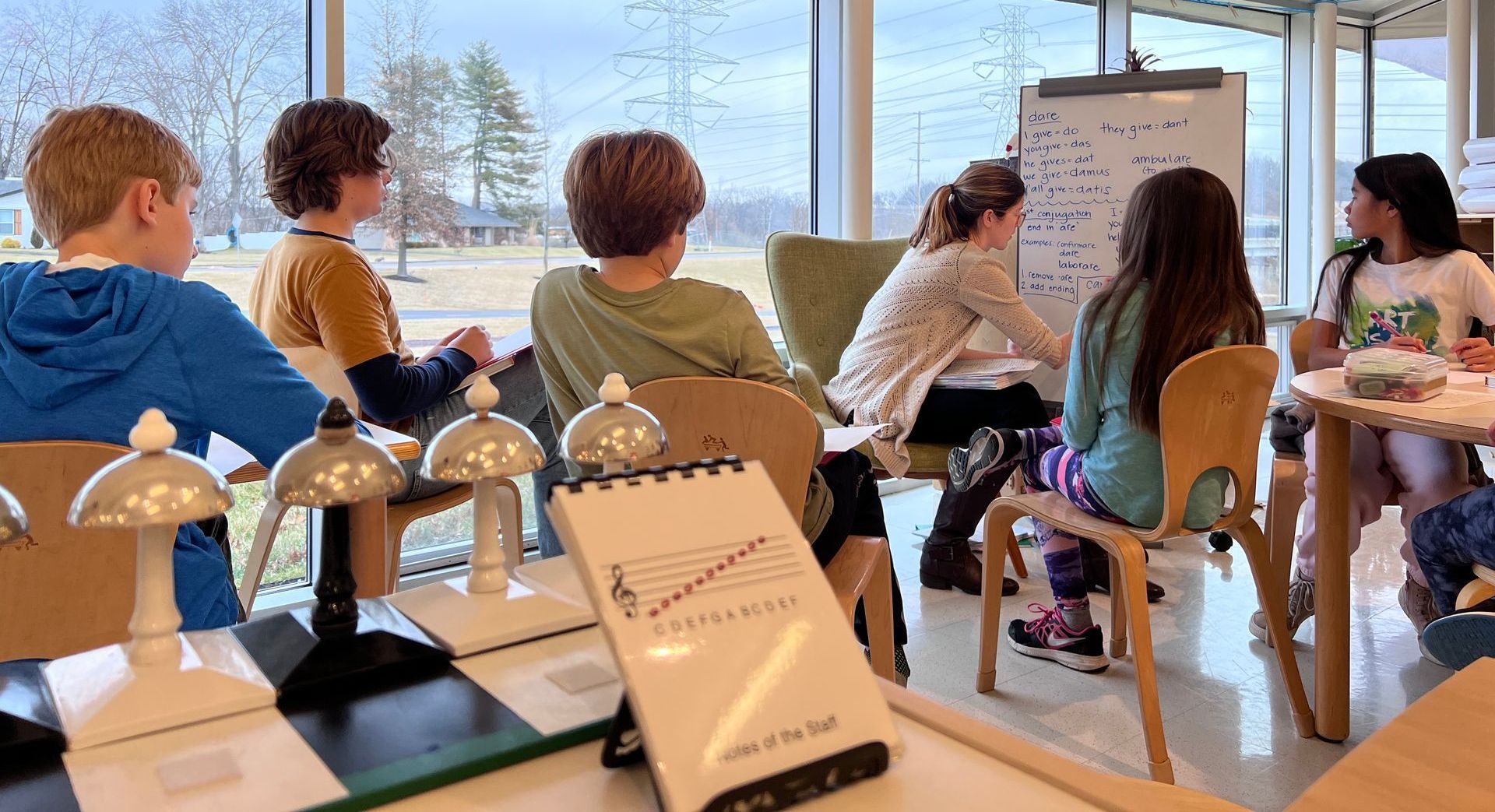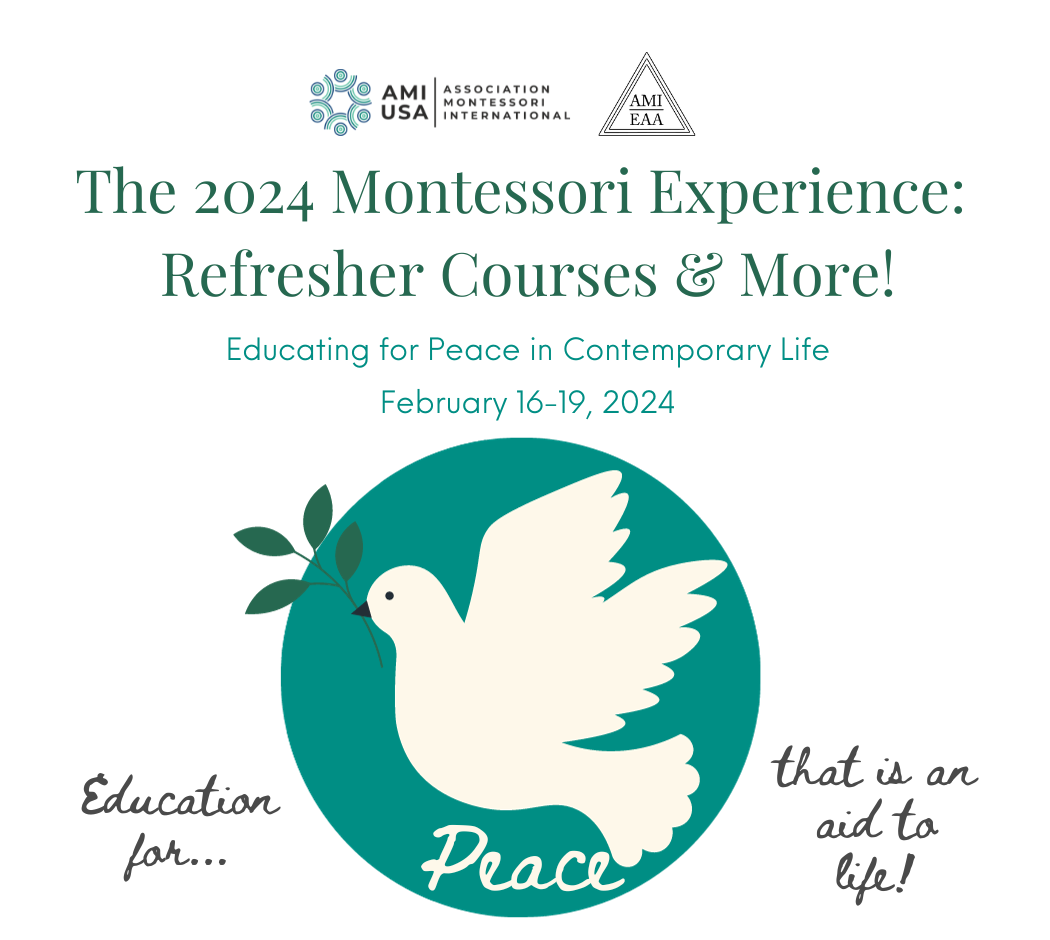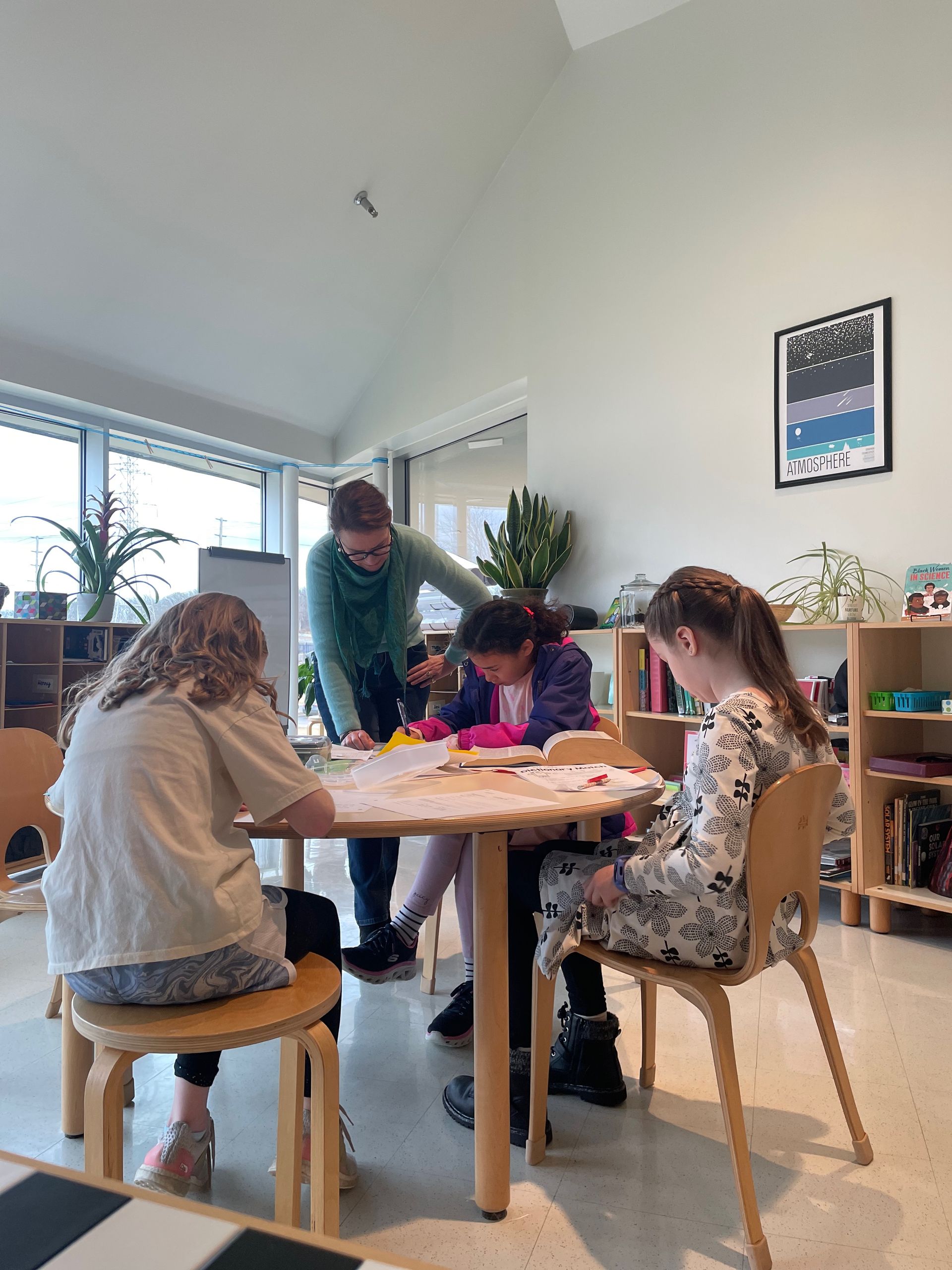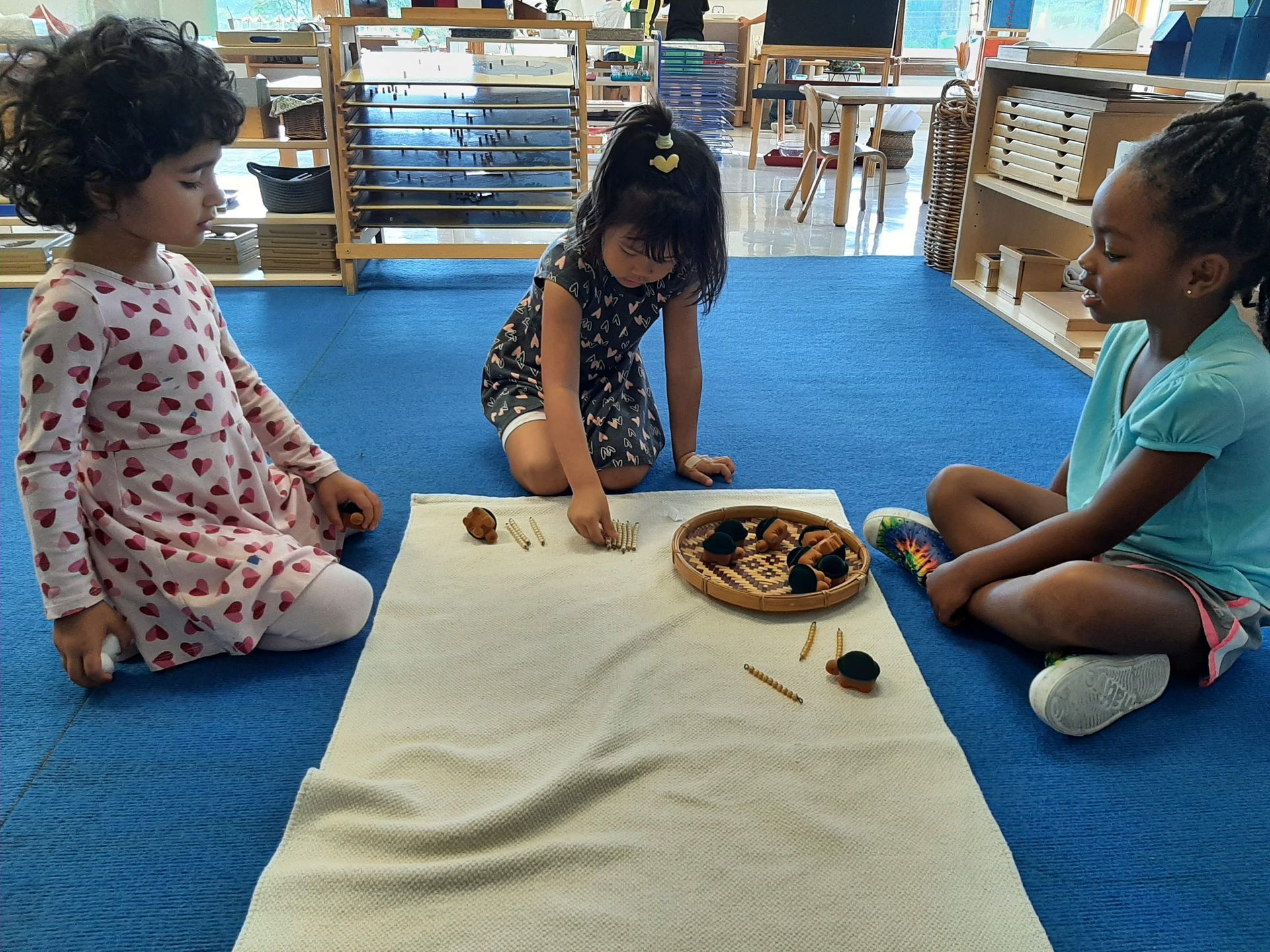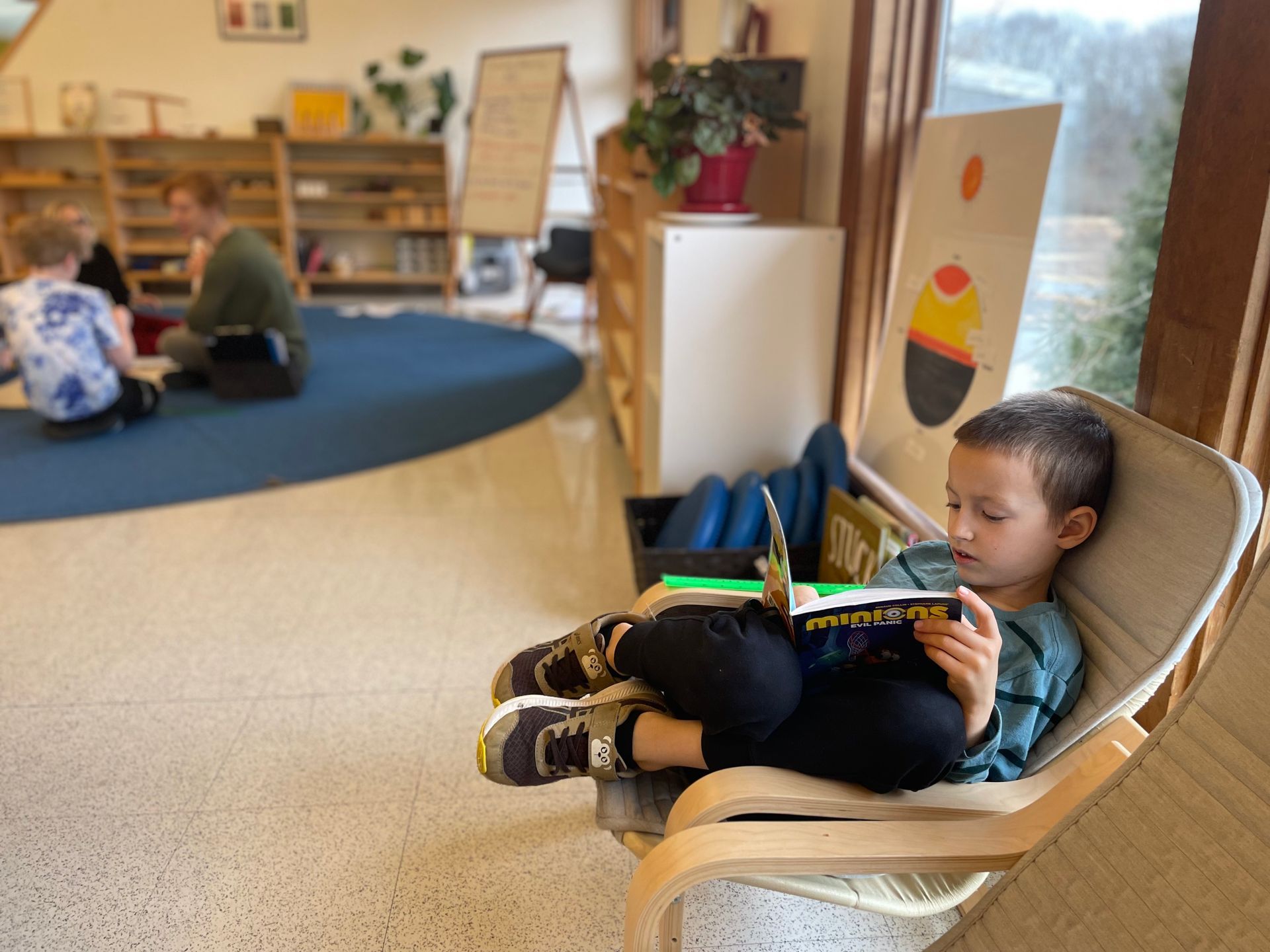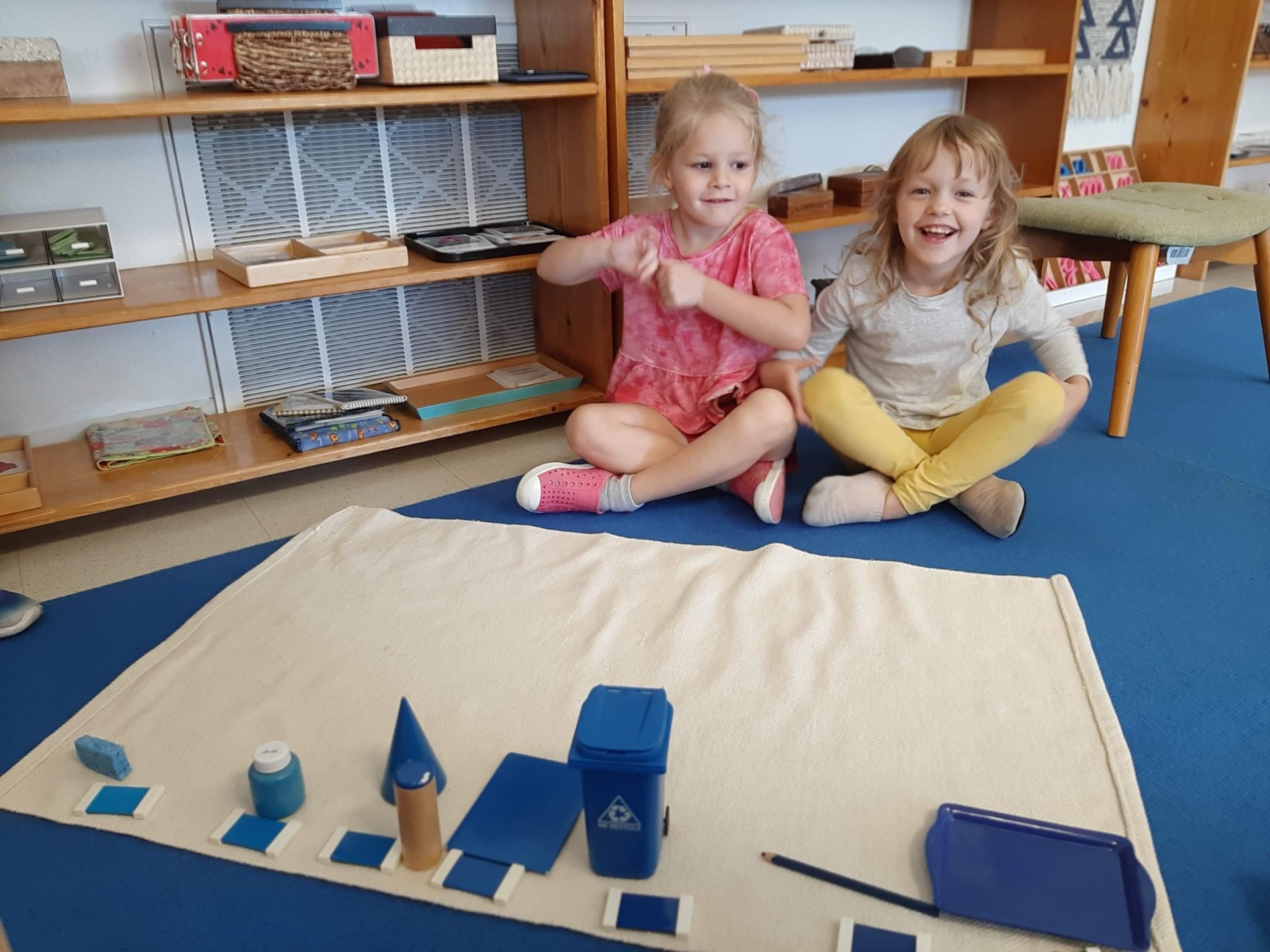Large classrooms with strong teachers lead to great outcomes for Montessori children.
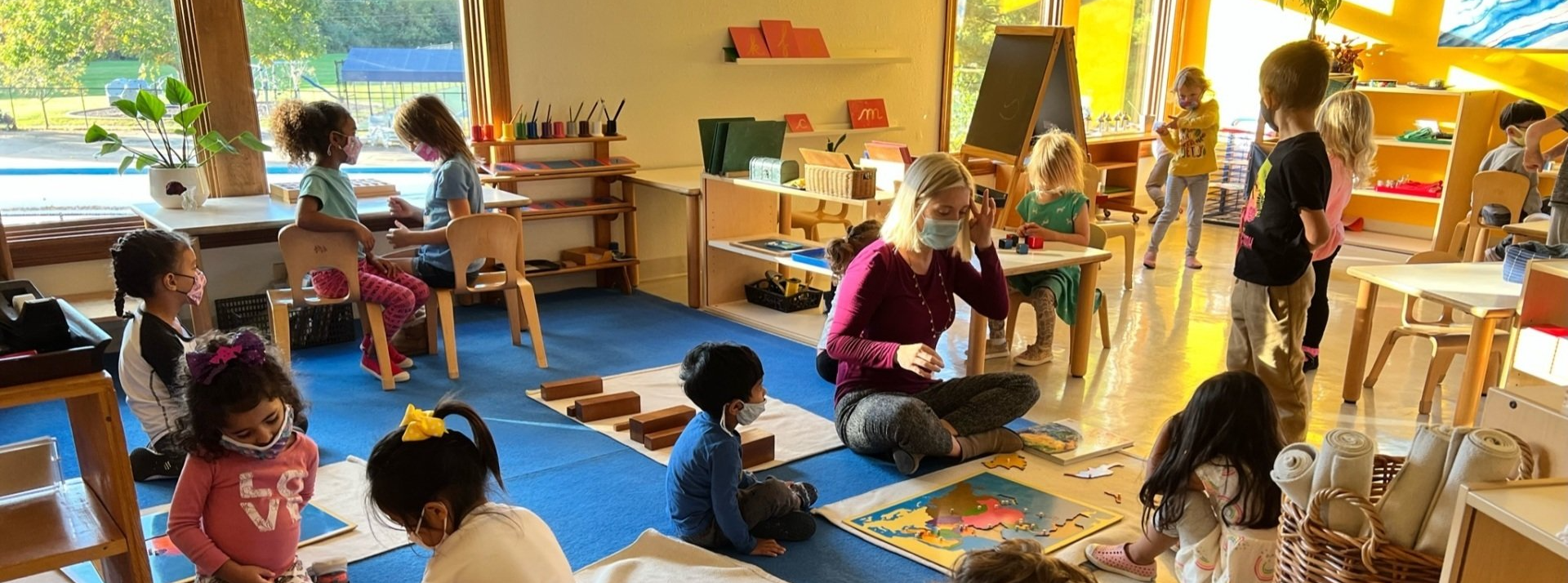
Montessori promotes individualized education, and initially it might be thought that a smaller class size is needed to allow for more one-on-one attention for students.
When you consider how a traditional school program works, this makes intuitive sense. In a traditional classroom, a teacher directs all students in a single-age environment, and much of the time, everyone is working on similar learning goals. The adult’s role is to transmit knowledge, all while being in charge of checking and correcting student’s work, managing the entire classroom, providing motivation and validation to students, calling students to attention, mediating conflicts, and so on.
Montessori functions very differently from traditional education, with the initially surprising result that larger classroom communities at the Primary, Elementary and Adolescent levels have significant advantages over smaller class sizes. Although in the Infant and Toddler Communities, the student-teacher ratios are kept purposefully in the 1:3 and 1:6 range respectively.
Materials and Lessons
The role of the adult in the Montessori classroom is different from the traditional approach in that they aren’t considered to be the only source of information. The role of materials and the Montessori adult is of a guide, not a traditional teacher. The Montessori Guide introduces a material through a presentation, such as a three-part lesson with the Sandpaper Letters in Primary, or offers thought-provoking information, like the Great Lessons in Elementary.
The lessons are just the beginning! Once a child receives a lesson, they practice the skill or content through independent follow-up work. For example, a Primary child may trace the Sandpaper Letters over and over again as they repeat the sound. Two Elementary students may study the Fundamental Needs of Human Beings and research how people obtained shelter, food, clothing and transportation with books in the classroom or books gathered at a Going Out Trip to the local library.
Montessori materials are scientifically developed to have a built-in control of error, meaning they are self-correcting. For example, a cylinder won’t fit into the Cylinder Blocks when it’s not the right size, the Bells won’t match if one pair is off, and the child will run out of counters if their count is off on Cards and Counters. This control of error enables the child to correct their own mistakes, without needing the help of a teacher to check their work and correct it for them.
The way students receive lessons with hands-on materials and thought-provoking information allows them to truly learn through experiences. The information will ultimately be better understood by the students because they are able to see, touch, research, and speak it on their own.
The role of peers in the mixed-age environments
In Montessori, the classrooms are purposefully composed of mixed-age children. In Primary, children ages 2.5 to 6 are in one class; 6 to 9 year olds are joined in Lower Elementary and 9 to 12 year olds in Upper Elementary. This allows children to learn from each other, which benefits both the younger and the older children.
Younger children get help or even receive lessons from older peers. This increases their own motivation, as the 4-year-old intuitively understands that they can and will soon read as well as their 5-year-old peer. It also improves reasoning and problem-solving skills. An 8-year-old who recently learned to master abstract addition into the thousands is often surprisingly capable at deciphering problems in a 7-year-old’s thinking about math: they overcame the same challenges a few months ago themselves!
Older children who give lessons or edit the work of younger children experience the benefit of built-in reviews. Do you remember the first time you learned to play a board game like Monopoly or Settlers of Catan? Now do you remember having to explain the game for the first time to a new group of friends? You develop a much deeper understanding of the game’s rules and strategies when you have to explain it to others, rather than through auditory learning. The same thing is happening in Montessori classrooms!
The older children may discover gaps in their own understanding in a non-threatening, non-pressuring way, and with much less stress than failing a test. Teaching their younger peers also improves confidence, as they experience just how capable and knowledgeable they have become with all the hard work they did in the preceding years.
Students also begin to independently notice when they need help, and they have the intuition to see if they can first find the answer on their own, then from peer, then from an older or more skilled mentor. This reliance on oneself and one’s own initiative to ask a peer produces great learning outcomes, while strengthening children’s leadership skills.
Training and preparation of the Montessori Guide
It may sound counter-intuitive, but to achieve the full benefits of peer learning and independent exploration, it is worthwhile to have a higher student to teacher ratio. Too many adults in the room leads children to look at their teachers too often for direction, when they could have the opportunity to think for themselves or learn from their peers.
Also, teachers with too few children may be tempted to teach too much, resulting in being more like a traditional teacher who manages the entire class as a whole. At Chesterfield Montessori School, all of our teachers are well trained, with an AMI-Montessori diploma in their appropriate plane of development. They recognize that a balanced room with more children can be better suited to meet each of their needs.
We hope understanding this unique feature of Montessori education helps you appreciate the great experience you are giving your child by investing in their education. Montessori materials, mixed ages and the three-year-cycle of learning are fundamentally different than traditional education, and at CMS, our team ensures that students receive the individual Montessori approach in every classroom and in every moment.
We invite you to schedule an observation to see the incredible work and learning happening for yourself! Not only will you notice stark differences, we think you’ll find yourself impressed with the scope of skills covered in a Montessori class as well as the absolute joy of the children you see there.
